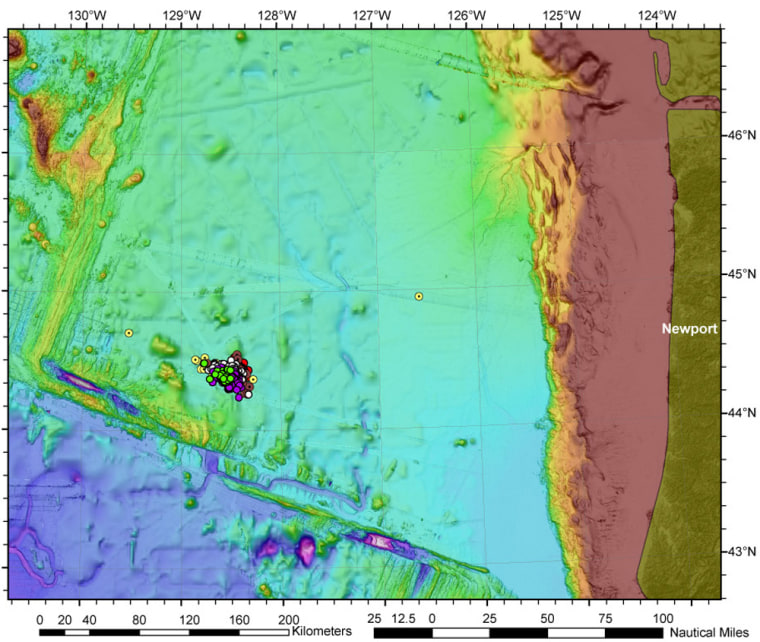Scientists listening to underwater microphones have detected an unusual swarm of earthquakes off central Oregon, something that often happens before a volcanic eruption — except there are no volcanoes in the area.
Scientists don't know exactly what the earthquakes mean, but they could be the result of molten rock rumbling away from the recognized earthquake faults off Oregon, said Robert Dziak, a geophysicist for the National Oceanic and Atmospheric Administration and Oregon State University.
There have been more than 600 quakes over the past 10 days in a basin 150 miles (240 kilometers) southwest of Newport, Ore. The biggest was magnitude 5.4, and two others were more than magnitude 5.0, Oregon State University reported.
“In the 17 years we’ve been monitoring the ocean through hydrophone recordings, we’ve never seen a swarm of earthquakes in an area such as this,” Dziak said.
The hydrophones are left over from a network the Navy used to listen for submarines during the Cold War. They routinely detect passing ships, earthquakes on the ocean bottom and whales calling to one another.
On the hydrophones, the quakes sound like low thunder. Some of the quakes have also been detected by earthquake instruments on land.
Scientists hope to send out an OSU research ship to take water samples, looking for evidence that sediment has been stirred up and chemicals that would indicate magma is moving up through the Juan de Fuca Plate, Dziak said.
Earthquake swarms have been reported off the Oregon coast before, including an episode that occurred in 2005 along a plate boundary northwest of Astoria.
The more recent swarm originates in a different area in the middle of the Juan de Fuca Plate, and the tremors are stronger, Dziak said. Also, the quakes have not followed the typical pattern of a major shock followed by a series of diminishing aftershocks, and few have been strong enough to be felt on shore.
“The fact that it’s taking place in the middle of the plate, and not a boundary, is puzzling,” he told The Register-Guard in Eugene. “It’s something worth keeping an eye on.”
Earth's crust is made up of plates that rest on molten rock, which are rubbing together. When the molten rock, or magma, erupts through the crust, it creates volcanoes.
That can happen in the middle of a plate. When the plates lurch against each other, they create earthquakes along the edges.
In this case, the Juan de Fuca Plate is a small piece of crust being crushed between the Pacific Plate and North America, Dziak said.
This report was supplemented by msnbc.com.
